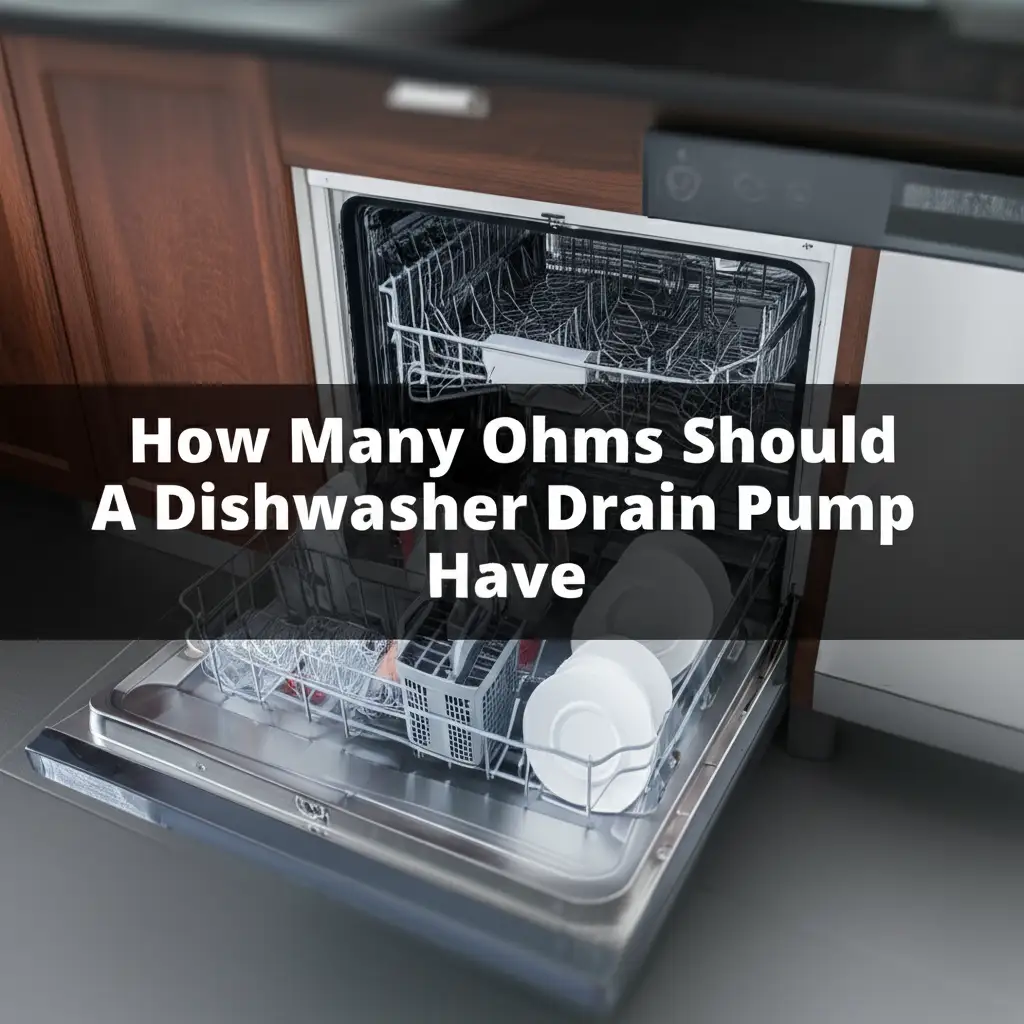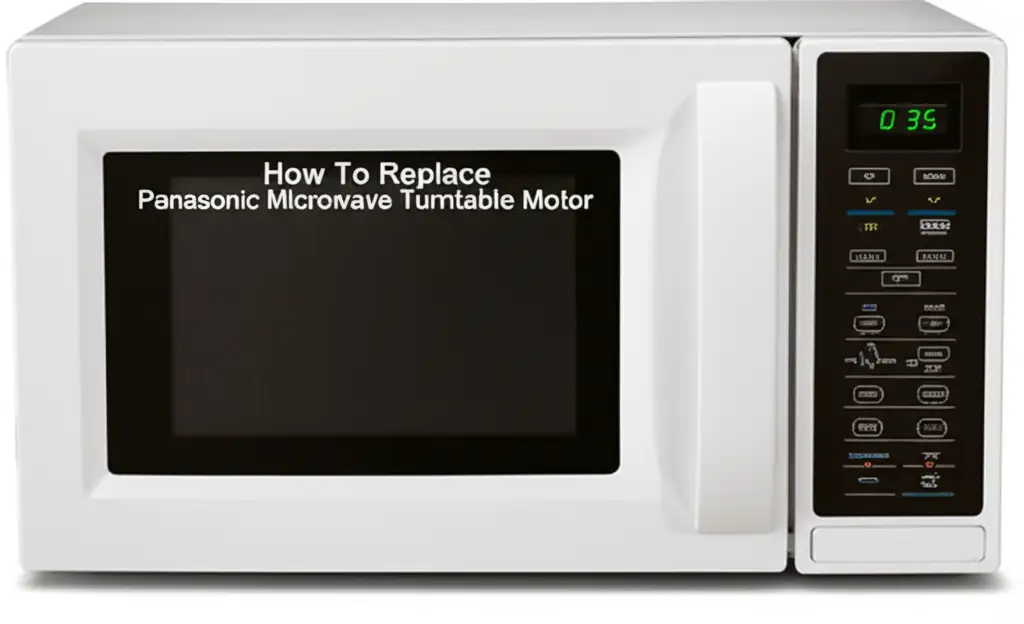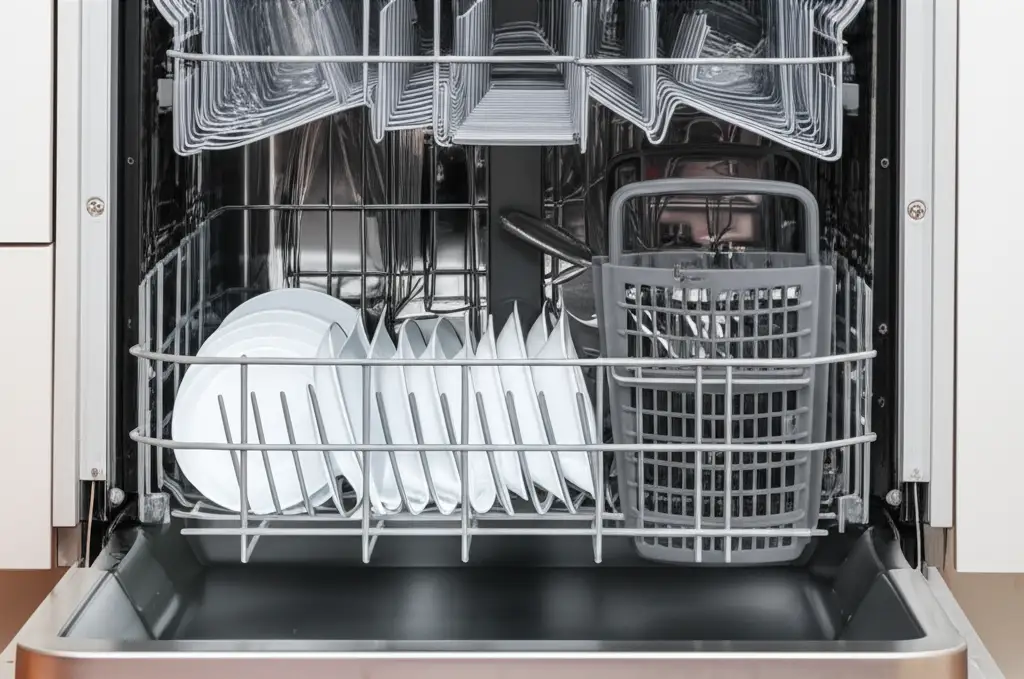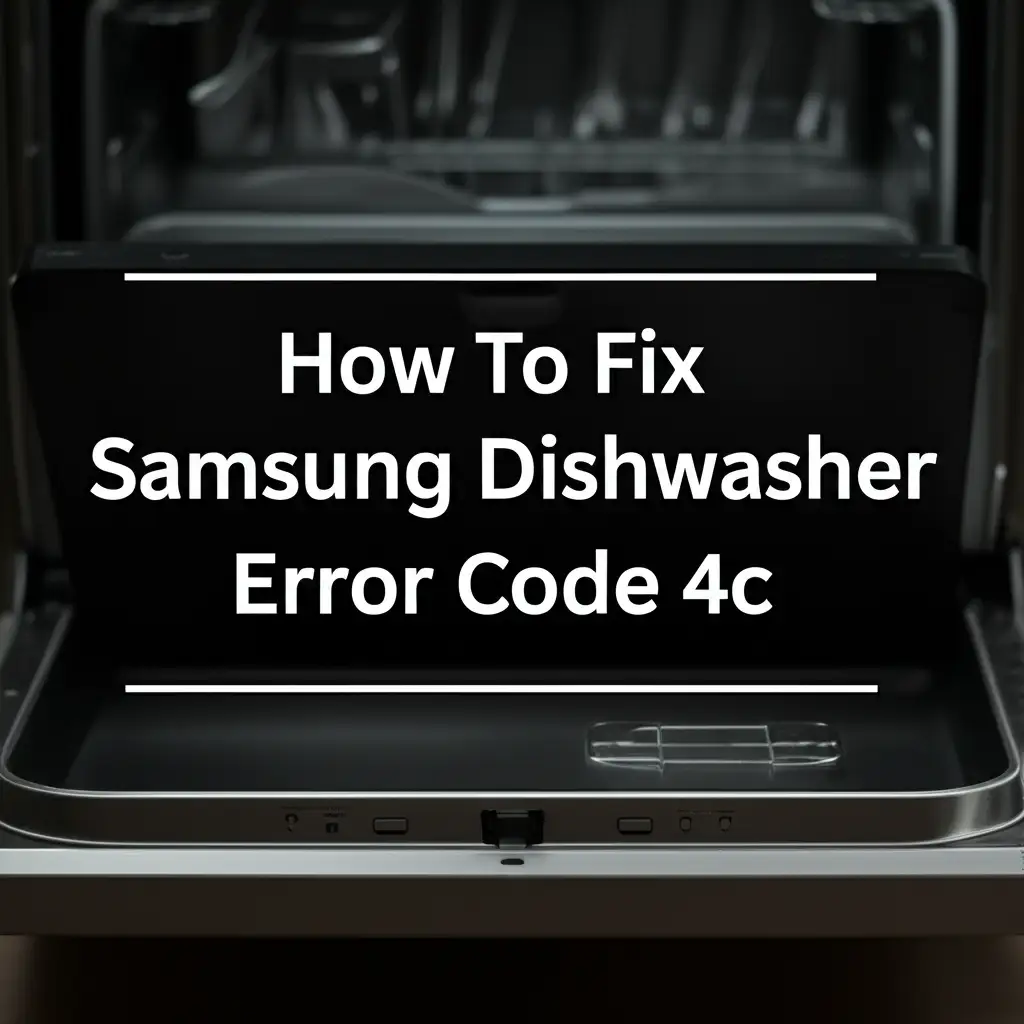· Elira Thomsen · Home Appliance Repair · 14 min read
How Many Ohms Should A Dishwasher Drain Pump Have

Dishwasher Drain Pump Ohms: A Testing Guide
Has your dishwasher stopped draining water? This common household problem often points to an issue with the drain pump. Understanding how many ohms a dishwasher drain pump should have is a key step in diagnosing the problem. You can often fix this issue yourself with a simple tool: a multimeter. This guide shows you how to test your dishwasher drain pump’s electrical resistance. It explains what different readings mean and helps you decide if you need a new pump.
Takeaway
- The drain pump’s electrical resistance (ohms) indicates its health.
- A multimeter is necessary to test drain pump ohms accurately.
- Resistance values vary by pump model, but a reading close to zero or “OL” (open loop/infinite) usually means a bad pump.
- Always disconnect power before testing electrical components.
Dishwasher Drain Pump Ohms: The Quick Answer
A functional dishwasher drain pump typically shows an electrical resistance between 10 to 40 ohms. This range can vary by manufacturer and model. An open circuit (multimeter shows “OL” or infinite resistance) or a very low resistance (near 0 ohms) indicates a faulty pump that needs replacement.
Understanding Your Dishwasher’s Drain Pump Function
Your dishwasher uses a drain pump to remove dirty water. After washing cycles finish, this pump activates. It pushes the water out of the dishwasher tub and into the home’s drain system. The pump uses an electric motor to create this force. This motor contains wire windings. These windings have a specific electrical resistance, measured in ohms.
When your dishwasher does not drain, the pump is often the cause. Sometimes, debris clogs the pump impeller. Other times, the electric motor inside the pump fails. This electrical failure means the motor no longer gets power or cannot spin. Knowing the correct electrical resistance for the drain pump helps you find the problem. You can learn more about general drainage problems by reading our guide on how to get the dishwasher to drain.
Why a Drain Pump Fails
Dishwasher drain pumps can fail for several reasons. One common reason is a blockage. Food particles or foreign objects can get stuck in the pump’s impeller. This stops the pump from spinning. Another reason involves the motor itself. Over time, the motor windings can break down. This causes an electrical open circuit. A short circuit can also occur, leading to very low resistance. Both electrical issues prevent the pump from working correctly. Sometimes, the pump simply wears out from age and use.
Why Drain Pump Ohms Matter for Troubleshooting
Measuring the ohms of your dishwasher drain pump helps you pinpoint electrical issues. Electrical resistance is a measure of how much an object resists the flow of electricity. The motor inside your drain pump has a specific resistance value when it is healthy. This value allows electricity to flow correctly and make the motor spin.
If the resistance is too high or too low, electricity cannot flow as it should. A very high resistance, often shown as “OL” (Open Line) or infinite on a multimeter, means the circuit is broken. This is an open circuit. It means electricity cannot complete its path through the motor windings. A very low resistance, close to zero ohms, suggests a short circuit. This means electricity finds an unintended, easy path, bypassing the motor windings. Both situations prevent the pump motor from working. Testing ohms helps confirm if the motor itself is electrically faulty, guiding your repair steps.
Diagnosing Electrical Faults with a Multimeter
A multimeter is a useful tool for electrical testing. It measures voltage, current, and resistance. When you set it to measure ohms, you are checking the integrity of the motor’s internal wiring. A proper resistance reading tells you the motor windings are continuous and intact. If the reading is wrong, you know the electrical part of the pump is bad. This saves time and effort. You avoid replacing parts that are still good. This direct electrical check is a precise way to diagnose a common drain pump issue.
Getting Ready to Test Dishwasher Drain Pump Ohms
Before you begin any electrical testing, safety is most important. You will work with electrical components. Always disconnect power to the dishwasher first. Do this by unplugging the appliance from the wall outlet. If it is hardwired, switch off the corresponding circuit breaker at your home’s electrical panel. This prevents electric shock.
You will need a multimeter for this test. A digital multimeter is easy to read. You also need basic tools like screwdrivers and possibly pliers to access the pump. Have a towel ready for any spilled water. Before you begin, clear the work area. This ensures you have enough space to work safely and effectively.
Essential Tools and Safety Measures
- Multimeter: A digital multimeter is best. It provides clear numerical readings.
- Screwdrivers: Philips and flathead screwdrivers are usually needed.
- Pliers: These help with hose clamps or difficult connections.
- Towels/Buckets: To manage any residual water in the dishwasher or drain hoses.
- Safety Glasses: Protect your eyes from debris or splashes.
- Gloves: Optional, but can help with grip and cleanliness.
Remember, safety comes first. Do not rush the process. Double-check that power is off before you touch any wires. If you are not comfortable with electrical work, consider calling a professional appliance technician.
Step-by-Step Guide: Testing Dishwasher Drain Pump Resistance
Testing your dishwasher drain pump’s resistance is a straightforward process. Follow these steps carefully. You will need to access the pump first. This usually means pulling the dishwasher out from its cabinet space.
Accessing the Drain Pump
- Disconnect Power: Unplug the dishwasher from its power outlet. If it is hardwired, turn off the circuit breaker that controls the dishwasher. This is a critical safety step.
- Pull Out Dishwasher: Carefully slide the dishwasher out from its spot under the counter. You might need to loosen mounting screws first.
- Locate the Drain Pump: The drain pump is usually at the bottom front of the dishwasher. It often has two wires connecting to it. The drain hose connects to it as well.
- Remove Electrical Connections: Find the electrical connector on the drain pump motor. Carefully disconnect it. You may need to press a tab or squeeze a clip. Take a picture with your phone before disconnecting. This helps you remember where wires go.
Using Your Multimeter to Test Ohms
- Set Multimeter: Turn your multimeter dial to the “Ohms” setting. This setting is usually marked with the Greek letter Omega (Ω).
- Select Range: If your multimeter has different resistance ranges, pick one that covers the expected value (e.g., 200 ohms or 2k ohms). If unsure, start with a higher range and adjust down.
- Touch Probes: Place one multimeter probe on each terminal of the drain pump’s motor where the wires connect. Ensure good contact. The orientation of the probes does not matter for resistance testing.
- Read Display: Look at the multimeter’s screen. It will show a number. This number is the resistance in ohms.
- Record Reading: Write down the number you see. This is your measured resistance.
This measurement tells you the electrical health of your drain pump. This test can tell you if the pump has an open circuit or a short circuit. If your dishwasher has a drainage issue, like not removing water, this test helps determine if the pump is the main problem. For similar issues related to drainage, you might find our guide on how to drain dishwasher water manually helpful as a temporary solution.
Interpreting Ohms Readings: What Your Multimeter Tells You
Once you have your multimeter reading, you need to understand what it means. The resistance value tells you the condition of the drain pump’s motor windings. Different readings indicate different pump states.
What is a “Good” Ohms Reading?
A healthy dishwasher drain pump will typically show an electrical resistance between 10 to 40 ohms. This range is a general guideline. Some specific models might have a slightly different range. You can often find the exact resistance specification in your dishwasher’s service manual or by checking online resources for your specific model number. If your reading falls within this expected range, the motor’s electrical windings are likely in good condition. This means the pump’s problem might be mechanical, like a clog, rather than an electrical failure.
What is a “Bad” Ohms Reading?
There are two main types of “bad” readings that indicate an electrically faulty pump:
- Open Circuit (OL / Infinite Resistance): If your multimeter displays “OL,” “O.L.,” or an extremely high, seemingly infinite number, it means there is an open circuit. This indicates a break in the motor’s internal wiring. Electricity cannot flow through the pump at all. This pump is electrically dead and needs replacement.
- Short Circuit (Near 0 Ohms): If your multimeter shows a very low resistance, close to 0 ohms, it suggests a short circuit. This means electricity is bypassing the motor windings, taking a path of least resistance. A short circuit also prevents the motor from working correctly and can cause other electrical issues. This pump also needs replacement.
In both cases of a “bad” reading, the drain pump’s electrical component has failed. Replacing the pump is the solution. Remember that even with a good ohms reading, a pump can still fail mechanically due to blockages or worn parts. For blockages, refer to resources on how to clear dishwasher drain line.
Common Causes of Dishwasher Drain Pump Failure (Beyond Ohms)
While checking the drain pump’s ohms is crucial for electrical diagnosis, not all pump problems are electrical. Many issues can make your dishwasher fail to drain, even if the pump motor’s resistance is perfect. Understanding these other causes helps you fully troubleshoot the problem.
Mechanical Blockages
The most common reason a dishwasher drain pump fails is a physical blockage. Food particles, broken glass, small utensils, or other debris can get sucked into the drain pump. This material gets caught in the pump’s impeller. The impeller is the part that spins and pushes water out. If it cannot spin freely, the pump cannot do its job, even if the motor is electrically sound. You might hear a humming noise if the motor tries to run but the impeller is stuck. Always check for blockages around and inside the drain pump housing if your ohms reading is good.
Worn or Damaged Impeller
Even without a full blockage, the impeller can become worn or damaged over time. Hard water deposits or continuous friction can degrade the plastic or metal blades. A damaged impeller cannot effectively move water. This leads to poor drainage. Sometimes, pieces of the impeller can break off. These broken pieces might then cause further blockages down the drain line. This issue is a mechanical failure, not an electrical one.
Kinked or Clogged Drain Hose
The drain pump pushes water through the drain hose. If this hose is kinked, bent sharply, or clogged with grease and food buildup, water cannot escape. This puts strain on the pump and prevents drainage. Check the entire length of the drain hose from the dishwasher to the drain connection (sink, garbage disposal, or air gap). A severely clogged hose can mimic a pump failure. You may need to disconnect and clear the hose.
Faulty Control Board or Wiring
Sometimes, the pump itself is fine, but it is not receiving power. This can happen if the dishwasher’s main control board is faulty. The control board sends the signal to the pump to start. If the board is bad, it might not send this signal. Similarly, damaged or loose wiring between the control board and the pump can prevent power from reaching the motor. This is why testing the pump’s electrical resistance directly at its terminals is important. It isolates the pump from potential wiring or control board issues. If your pump’s ohms are good, but it still does not run, you need to check the power supply and control board.
Replacing a Faulty Dishwasher Drain Pump
If your multimeter reading confirms a faulty drain pump, replacing it is the next step. This task can be done by a homeowner with basic tools and some patience. Always ensure you have the correct replacement part for your specific dishwasher model. Parts vary between brands and models.
Steps for Replacing the Drain Pump
- Disconnect Power: This is the most crucial step. Unplug the dishwasher or turn off its circuit breaker.
- Prepare Work Area: Pull the dishwasher out. Have towels ready for water spills.
- Drain Remaining Water: Manually scoop out any standing water in the tub. You can also tilt the dishwasher to let water drain into a shallow pan. This makes the job cleaner and safer.
- Access the Pump: Locate the old drain pump, usually underneath the dishwasher. It is often held by a few screws or clips.
- Disconnect Hoses and Wiring: Carefully remove the drain hose clamp and slide the hose off the pump. Disconnect any electrical wires. Pay attention to how they are connected.
- Remove Old Pump: Unmount the old pump from its housing. It might twist off or unclip.
- Install New Pump: Position the new drain pump correctly. Secure it with screws or clips.
- Connect Hoses and Wiring: Reconnect the drain hose and secure it with its clamp. Reconnect all electrical wires to the new pump. Ensure connections are snug.
- Test: Carefully slide the dishwasher back. Reconnect power. Run a quick drain cycle to check for leaks and proper operation.
- Check for Leaks: Watch closely during the first test cycle. Ensure no water leaks from the new connections. If you find leaks, our guide on how to repair a leaking dishwasher might offer general advice, though specific leak points from a new pump installation would be at the hose connections.
Replacing the drain pump correctly ensures your dishwasher returns to full function. It restores proper drainage and allows your appliance to clean dishes efficiently again.
FAQ Section
Can I test a dishwasher pump without removing it?
Yes, in most cases. You usually access the drain pump from under the dishwasher. You can disconnect its electrical wires there. This allows you to test the pump’s ohms without fully removing the pump unit from the dishwasher. Always ensure the dishwasher is unplugged first.
What if my multimeter shows “OL” or “infinite” resistance?
An “OL” or infinite resistance reading on your multimeter means there is an open circuit in the drain pump’s motor windings. This indicates an electrical break. The pump is faulty and requires replacement. Electricity cannot flow through it to make the motor work.
What is a normal resistance range for a dishwasher motor?
A normal resistance range for a dishwasher drain pump motor typically falls between 10 to 40 ohms. However, this range can vary by manufacturer and specific dishwasher model. Always check your appliance’s service manual or reliable online resources for the exact specifications.
How do I know if my drain pump is mechanically failed?
If your drain pump shows a good ohms reading (10-40 ohms), but the dishwasher still does not drain, the problem is likely mechanical. You might hear the pump motor humming but no water moving. This suggests a clogged or damaged impeller. You will need to inspect the pump for physical blockages or impeller damage.
Are all dishwasher drain pumps tested the same way?
Yes, the general method for testing resistance (ohms) on dishwasher drain pumps is the same. You always disconnect power, access the pump’s electrical terminals, and use a multimeter set to ohms to measure resistance across those terminals. The specific resistance value might differ by model, but the testing process is universal.
Conclusion
Understanding how many ohms a dishwasher drain pump should have empowers you to diagnose common drainage issues. By using a simple multimeter, you can quickly determine if your pump’s electrical motor is the source of the problem. A reading outside the typical 10-40 ohm range usually means you need a new pump. However, remember that not all drainage problems are electrical. Always check for mechanical blockages too.
I hope this guide helps you tackle your dishwasher’s drainage issues with confidence. By carefully following the steps, you can troubleshoot effectively and get your dishwasher back to working order. Regular maintenance, like checking for debris, can help prevent future pump problems. Do you have more questions about dishwasher maintenance? Explore other articles on our site for more home appliance repair tips!
- dishwasher repair
- drain pump testing
- ohms multimeter
- appliance troubleshooting
- resistance values
- dishwasher drainage
- home repair guide





